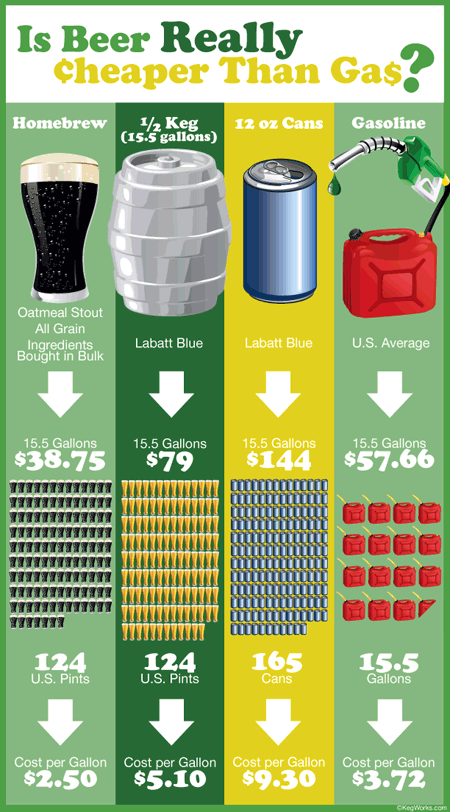
Once again, gas prices are on the rise. Along with pain at the pump, the costly increase comes with consumer frustration, extensive news coverage, and plenty of fodder for late night talk show hosts and politicians alike.
Here in the beer world, we've seen a recent surge in graphics, t-shirts, and signs emblazoned with the witty saying, "Beer – Now Cheaper than Gas. Drink Don't Drive."
While we certainly appreciate the clever wording we couldn't help but wonder how much truth there is to the claim. Our research shows that it all depends on what you're drinking and how that beer came to be.
The price of gas has already risen by 44 cents per gallon since December, and this past week the national average in the U.S. was $3.72 - 40 cents higher than a year ago, 15 cents higher than the price the previous week and 28 cents away from matching the United States' all-time high of $4.05 (on a national average basis).
According to the U.S. Energy Information Administration, about 80 percent of the cost that an American consumer pays accounts for crude oil and refining, while 10 percent of the cost covers distribution and marketing and the remaining 10 percent is taxes. In many European countries, taxes are close to 50 percent and prices at the pump are nearly double.
Beer is a different story. When you compare the cost of homebrew to the price of beer purchased in a bar or at a store, the difference is substantial. Approximately 3 percent of the money you pay for a commercial beer covers the ingredients and production, while the rest is for packaging, marketing, and distribution. Regardless of who's doing the brewing, ingredients for a super hoppy double IPA are going to cost about twice as much as the ingredients for something like a blonde ale or cream ale, made with just a single base malt. More complex beers sometimes calI for multiple kinds of specialty grains and an over abundance of hops, further increasing the production costs. This is why craft beers are obviously priced much higher than macro lagers. No matter how you look at the costs, there are far more variances than there are consistencies.
With all of these variables to consider, we decided to stick to what we know and use some real life homebrew and commercial beer examples for the sake of comparison. Here’s what we came up with:
In conclusion, if (and only if) you're brewing your own malty beer with well sourced ingredients - beer is cheaper than gas.
If you have a draft system, a ½ keg of non-craft beer may soon be about the same price as gas. If you have a draft system and you're buying ½ kegs of the good stuff, gas will likely always be way cheaper than your beer. Guess that's the price you pay for being a snob.
Bottled and canned beers are not likely to ever be cheaper than buying gas. If it even gets close, driving will be a privilege reserved for the very rich.
We won't call anyone out on their claims, as the statement can technically be true - we just thought it was an issue worth exploring.
#beervsgas




Leave a Comment